
When we go to the field to evaluate a crop, there are typically three fundamental points we need to take into consideration that include: 1) stage of growth, 2) general crop vigor and yield potential, and 3) anticipate the next stage of development and what we need to do in terms of field crop management. These considerations are commonly focused on aboveground crop evaluations. However, the root system is also an extremely important part of the crop condition to evaluate.
Root systems were described in a basic manner in a recent article on 2 May 2023 (UA Vegetable IPM Newsletter Volume 14, No. 9).
The effective root zone depth is the depth of soil used by the bulk of the plant root system to explore a soil volume and obtain plant-available moisture and plant nutrients. Effective root depth is not the same as the maximum root zone depth. As a rule of thumb, we commonly consider about 70% of the moisture and nutrient uptake by plant roots takes place in the top 24 inches of the root zone; about 20% from the third quarter; and about 10% from the soil in the deepest quarter of the root zone (Figure 1).
The small and very fine root hairs are the most physiologically active portion of a developing root system. It is important that the plants continue to develop and generate fresh young roots and an abundance of fine root hairs to maintain water and nutrient uptake.
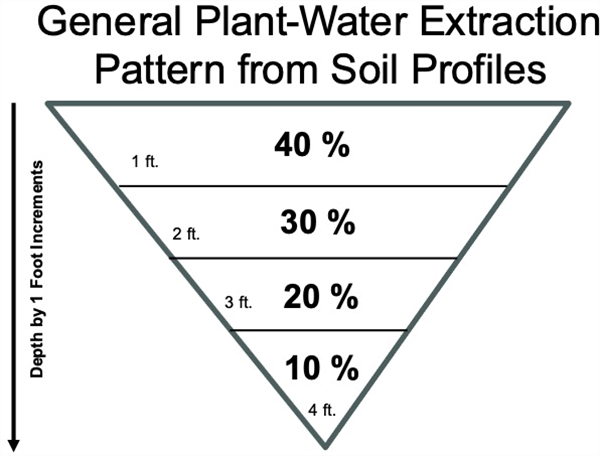
Figure 1. General pattern for plant-water and nutrient uptake from the soil profile.
It is important to point out that these general root development patterns are dependent on the nature of the soil profile in the fields. Soil profiles with compaction layers, as well as rock or caliche layers will limit root development and full exploration of the soil volume that the plants are capable of (Figure 2).
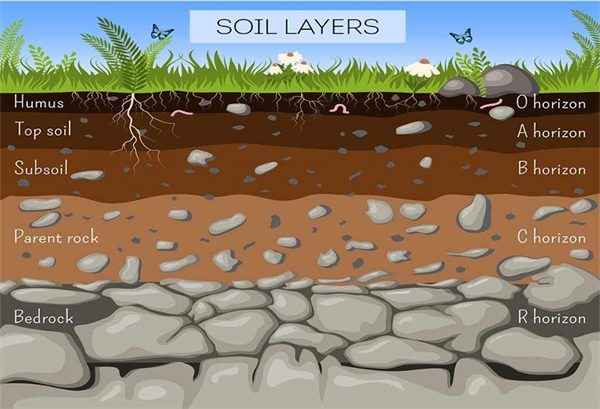
Figure 2. Generalized soil profile with major horizons.
Therefore, in scouting fields and making crop evaluations, examining the root systems is an important part of the process. Leafy green vegetable crops need to develop a marketable plant in a relatively short amount of time and a strong root system is essential.
It does take more time and effort to check root systems and it is a plant destructive process since we need to literally excavate the roots. So, it is also important to be careful of where and how we sample plants and the root systems in a field.
Crop species can vary significantly in their patterns of root development and it is important to know what is “normal” when evaluating crops in the field. An excellent reference for vegetable crop root system development is a 1927 publication by Dr. John E. Weaver and William E. Bruner from the University of Nebraska (Root Development of Vegetable Crops). This publication can be found at the following link:
https://soilandhealth.org/wp-content/uploads/01aglibrary/010137veg.roots/010137toc.html
A few basic examples from the Weaver and Bruner publication are provided in the following figures (Figures 3-10).
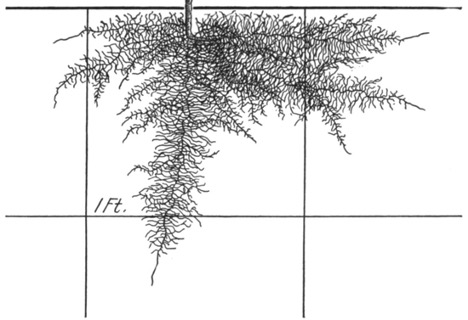
Figure 3. Cauliflower, 3 weeks after transplanting.
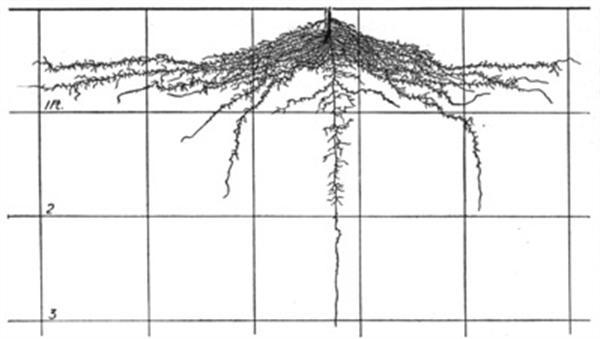
Figure 4. Cabbage roots, 55 days after transplanting.
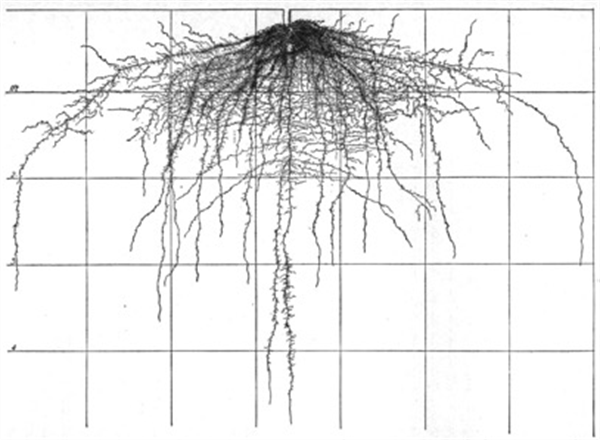
Figure 5. Cabbage roots, 75 days after transplanting.
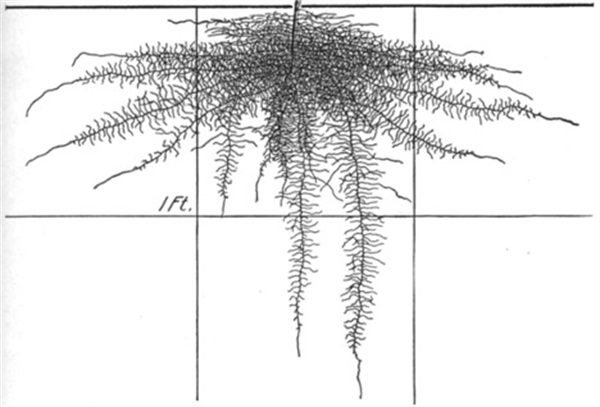
Figure 6. Pepper roots, 24 days.
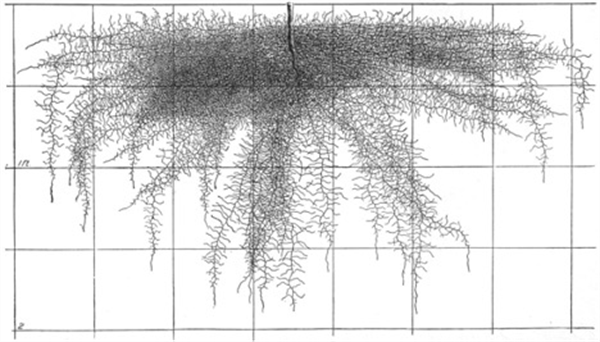
Figure 7. Pepper roots, 45 days (6 weeks).
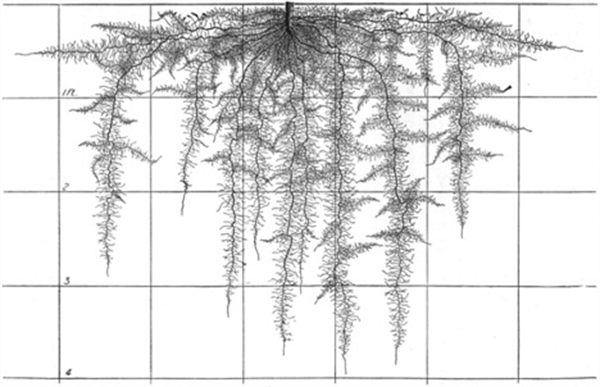
Figure 8. Pepper roots, mature.
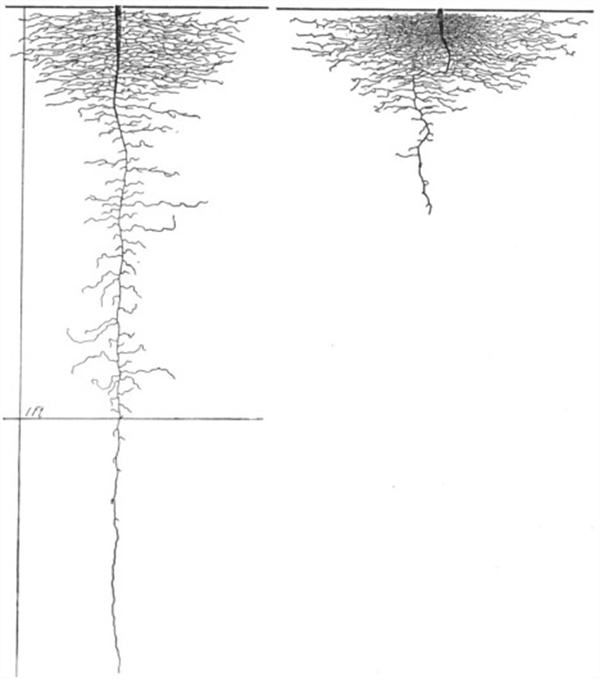
Figure 9. Lettuce roots, 3 weeks. The roots on the right were grown in compact soil, the roots on the
left were grown in loose/open soil.
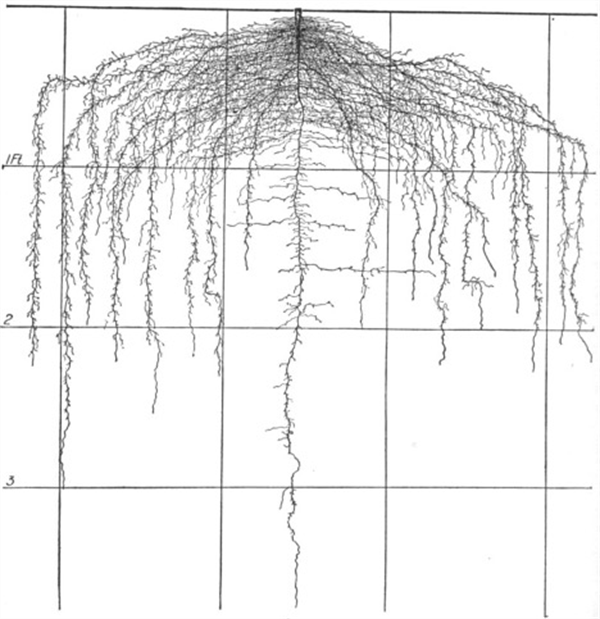
Figure 10. Lettuce roots, 60 days.
It’s unfortunately a very great season to be a plant pathologist…
We have confirmed the first sample of Fusarium wilt on lettuce submitted to the Yuma Plant Health Clinic from Yuma County. The stunted seedlings looked like any other typical case of damping-off at the seedling stage. When plated on culture media, subsequently confirmed Fusarium colonies grew abundantly from the declining plant tissues. If you’re not already on guard and scouting, this is a warning that Fusarium is active in Yuma County.
Adding on to this early alert, we’ve received a surge of submissions of young brassicas to the clinic. Several severely wilted and declining plants from around Yuma County have cultured positive for Pythium, likely as an opportunistic invader coming in on the back of all the early-season rain that brought stress to seeds and young transplants. Growers may want to consider oomycides, but only if the seedling disease is first confirmed to be Pythium. Remember, many seedling diseases caused by true fungi are indistinguishable from those caused by Pythium.
If you have any concerns regarding the health of your plants/crops please consider submitting samples to the Yuma Plant Health Clinic for diagnostic service or booking a field visit with me:
Chris Detranaltes
Cooperative Extension – Yuma County
Email: cdetranaltes@arizona.edu
Cell: 602-689-7328
6425 W 8th St Yuma, Arizona 85364 – Room 109
Fig. 1. Finger weeders removing a large, in-row Palmer Amaranth plant in cotton – slow motion video. (Video credit: Kyle R. Russel, Texas A&M University. Cultivator design and setup credit: Carl Pepper, Lubbock, TX). Click here or on the image to see the video.
On Thursday February 23, 2023, the afternoon the SWAS breakout sessions dedicated to Integrated Weed Management and Impact to Desert Agriculture (Located at AS 113) will have participation from Jesse Richardson from Corteva Agriscience. He will give us the historic perspective of Kerb Chemigation research. Samuel Discua Duarte from the U of A has conducted a weed survey for INSV virus hosts for a couple of years and will inform the results in his lecture.
Jose L. Carvalho de Souza from the University of Arizona Maricopa Agricultural Center will give us a lecture on the management of Palmer amaranth, the King of weeds. And I will inform some of the results from our Prefar trials at the Yuma Agricultural Center.
You are cordially invited to the session as well as the other breakout Southwest Ag Summit sessions organized by our Arizona Vegetable IPM Team…hope to see you there!.
INTEGRATED WEED MANAGEMENT AND IMPACT TO DESERT AGRICULTURE
(Requesting 2 CEU and 2 CCA)
Location: AS 113
Sponsor: Green Valley Farm Supply, Inc.
1:30-2:00p Insights from Early Kerb Chemigation Research
Jesse Richardson, Corteva Agriscience, Mesa, AZ
2:00-2:30p Survey of Weeds as Hosts of INSV in Yuma County – Results From Two Year Survey
Samuel Discua Duarte, University of Arizona, Yuma,AZ
2:30-3:00p Integrated Weed Management – Palmer Amaranth
Jose L. Carvalho de Souza, University of Arizona, Maricopa, AZ
3:00-3:30p Herbicide Evaluations at Yuma Agricultural Center
Marco Pena, University of Arizona, Yuma, AZ
Moderated by Marco Pena
This time of year, John would often highlight Lepidopteran pests in the field and remind us of the importance of rotating insecticide modes of action. With worm pressure present in local crops, it’s a good time to revisit resistance management practices and ensure we’re protecting the effectiveness of these tools for seasons to come. For detailed guidelines, see Insecticide Resistance Management for Beet Armyworm, Cabbage Looper, and Diamondback Moth in Desert Produce Crops .
VegIPM Update Vol. 16, Num. 20
Oct. 1, 2025
Results of pheromone and sticky trap catches below!!
Corn earworm: CEW moth counts declined across all traps from last collection; average for this time of year.
Beet armyworm: BAW moth increased over the last two weeks; below average for this early produce season.
Cabbage looper: Cabbage looper counts increased in the last two collections; below average for mid-late September.
Diamondback moth: a few DBM moths were caught in the traps; consistent with previous years.
Whitefly: Adult movement decreased in most locations over the last two weeks, about average for this time of year.
Thrips: Thrips adult activity increased over the last two collections, typical for late September.
Aphids: Aphid movement absent so far; anticipate activity to pick up when winds begin blowing from N-NW.
Leafminers: Adult activity increased over the last two weeks, about average for this time of year.







